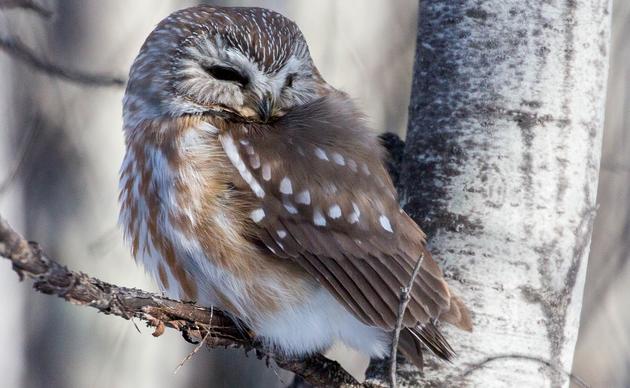Troy, NY (January 15, 2019)– Today, National Audubon Society and participating Audubon chapters and centers in New York State launched the 2019 seasonal Climate Watch, a community science program designed to help scientists better understand how birds are impacted by our warming planet. From January 15 through February 15, winter surveys of Eastern Bluebirds, Red-breasted Nuthatches, and White-breasted Nuthatches are conducted by experienced and novice birders.
“Protecting natural resources in the face of rising temperatures is one of the greatest challenges of our time,” said Ana Paula Tavares, executive director of Audubon New York. “This community science program makes climate change personal for the leaders, activists, and backyard birders who participate.”
The goal of Climate Watch is to capture changes in the breeding and wintering activity of target species. Climate Watch focuses on bluebirds and nuthatches because the ranges of these species cover most of the United States and are anticipated to experience climatic changes; these ranges will shrink, shift, or expand and the question is how the birds will respond. In New York, volunteers count Eastern Bluebirds, Red-breasted Nuthatches, and White-breasted Nuthatches.
“Audubon’s 2014 research revealed that about half of all bird species in the United States are at risk of worsening conditions in the places they live if climate change continues at the current pace,” said Dr. Brooke Bateman, senior climate scientist at National Audubon Society. “Climate Watch is a way to test that research and provide key information about what help birds may need right now as they experience climate change.”
During Climate Watch, Audubon provides volunteers with maps, overlaid with a grid of 10 km x 10 km squares showing species-specific predictions for each square based on Audubon’s climate models. Using the maps provided, volunteers survey habitat within a square and conduct 12 point counts of five minutes each, then record the number and species of all birds seen or heard within 100 meters. This science is used to prioritize conservation of the places birds need, now and in the future.
“Community scientists are critical to ground-truthing Audubon’s climate predictions and monitoring how birds are responding to changes in their habitats,” said Kelly Knutson, New York field organizer. “We welcome all interested volunteers, both experienced and novice birders, to help us test our research and improve our models.”
In addition to the winter survey period (January 15 to February 15) there is also a summer survey period from May 15 to June 15.
Climate Watch volunteers can learn more at audubon.org/climate-watch.
Participants newer to birding or community science can reach out to their local Climate Watch Coordinator and find out more about how to volunteer at https://www.audubon.org/features/esri-climate-watch.
Birders with an eBird account and who have GIS mapping skills can claim their Climate Watch Square (URL) and get started on their own.
Have more questions? Visit Audubon’s Climate Watch FAQ.
About Audubon New York
Audubon New York, a state program of the National Audubon Society, protects birds and the places they need, today and tomorrow, throughout the Americas using science, advocacy, education and on-the-ground conservation. Audubon’s state programs, nature centers, chapters and partners have an unparalleled wingspan that reaches millions of people each year to inform, inspire and unite diverse communities in conservation action. Since 1905, Audubon’s vision has been a world in which people and wildlife thrive. Audubon is a nonprofit conservation organization. Learn more at www.ny.audubon.org.
###
Contact: Elizabeth Burns, Communications Associate, eburns@audubon.org (518) 869-9731

By Audubon New York
Contribute to Our Conservation Success
You play an important role in our mission to protect birds & the habitats they need to survive.




